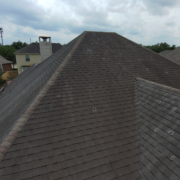How Hail Damage Claims for Roofs Work in Texas
 How Hail Damage Claims for Roofs Work in Texas
How Hail Damage Claims for Roofs Work in Texas
Hailstorms are a common occurrence in Texas, and they can wreak havoc on residential and commercial properties, particularly roofs. When a hailstorm strikes, it can cause significant damage to your roof, leading to the need for repairs or even a full replacement. Fortunately, in Texas, homeowners and property owners have insurance policies in place to protect their investments from hail damage. In this comprehensive guide, we will delve into the intricacies of how hail damage claims for roofs work in Texas, helping you navigate the process smoothly and effectively.
Understanding Hail Damage
Before diving into the claims process, it’s essential to understand what hail damage looks like and how it can affect your roof. Hail damage can vary in severity, depending on the size of the hailstones and the materials of your roof. Here are some common signs of hail damage:
- Dented or Cracked Shingles: Hailstones can cause shingles to crack or dent. Look for visible signs of damage on your roof’s surface.
- Missing Granules: Hail can dislodge the granules on asphalt shingles, leaving them exposed and vulnerable to further damage.
- Soft Spots: Hail can weaken the structure of your roof, causing soft spots or depressions.
- Leakage: The most severe hail damage may lead to leaks in your home. Look for water stains on ceilings or walls as a potential indicator.
- Gutter Damage: Hail can also damage gutters, downspouts, and other roof-related components.
Once you’ve identified hail damage on your roof, it’s time to begin the claims process.
Hail Damage Insurance Coverage in Texas
In Texas, homeowners typically have homeowners’ insurance policies that include coverage for hail damage. However, it’s crucial to review your policy and understand the specifics of your coverage. Here are some key points to keep in mind:
- Deductible: Like any insurance claim, you will have a deductible to meet before your insurance company covers the remaining costs. This deductible amount can vary based on your policy, so check your policy documents or consult your insurance agent.
- Coverage Limits: Your policy may have limits on the amount of coverage for hail damage. Make sure you are aware of these limits to avoid surprises during the claims process.
- Actual Cash Value vs. Replacement Cost: There are two primary methods for determining the compensation for hail damage: actual cash value (ACV) and replacement cost value (RCV). ACV takes depreciation into account, while RCV covers the full cost of repair or replacement without considering depreciation.
Filing a Hail Damage Claim
Once you’ve confirmed hail damage and reviewed your insurance policy, it’s time to file a claim with your insurance company. Here’s a step-by-step guide on how to do it:
- Document the Damage: Before contacting your insurance company, thoroughly document the hail damage. Take clear photographs and videos of the damaged areas from multiple angles. This visual evidence will be crucial when filing your claim.
- Contact Your Insurance Company: Reach out to your insurance company’s claims department as soon as possible. Most insurance companies have dedicated hotlines for claims. Be prepared to provide your policy number, the date of the hailstorm, and a description of the damage.
- Schedule an Inspection: Your insurance company will likely assign an adjuster to assess the damage. Work with the adjuster to schedule a convenient time for the inspection. During the inspection, point out the documented damage and provide any additional information as requested.
- Receive the Estimate: After the inspection, the adjuster will provide you with an estimate of the repair or replacement costs. Make sure to ask questions and seek clarification if needed.
- Review the Estimate: Carefully review the estimate to ensure it covers all necessary repairs. If you believe the estimate is inadequate, you have the right to request a reevaluation or dispute the findings.
- Get Repair Quotes: It’s a good practice to obtain repair quotes from reputable roofing contractors. This can help you compare their estimates with the insurance adjuster’s assessment and ensure you’re getting a fair settlement.
- File the Claim: Once you are satisfied with the estimate and have gathered the necessary documentation, submit your claim to the insurance company. This typically involves signing a claims settlement agreement.
- Approval and Payment: If your claim is approved, your insurance company will issue a payment to cover the repairs or replacement of your roof. Depending on your policy, this payment may be made in one or multiple installments.
- Hire a Contractor: With your insurance settlement in hand, you can now hire a roofing contractor to complete the necessary repairs or roof replacement. Choose a reputable and licensed contractor who can provide quality workmanship.
- Final Inspection: After the repairs or replacement are complete, the insurance company may conduct a final inspection to ensure the work was done correctly. Be sure to keep all receipts and records of the repairs for your records.
Challenges and Tips
While the process outlined above may seem straightforward, there can be challenges along the way. Here are some common challenges and tips for navigating the hail damage claims process in Texas:
- Delayed Claims: Hailstorms can lead to a surge in insurance claims, causing delays in processing. Be patient, but also stay in communication with your insurance company.
- Coverage Disputes: If your claim is denied or you receive a lower settlement than expected, you have the right to dispute the decision. Consult with a public adjuster or attorney if necessary.
- Choosing a Contractor: Selecting the right roofing contractor is crucial. Research their credentials, read reviews, and ask for references. Avoid contractors who promise to waive your deductible, as this can be considered insurance fraud.
- Document Everything: Keep detailed records of all interactions with your insurance company, contractors, and any related expenses. This documentation can be valuable if disputes arise.
- Know Your Rights: Familiarize yourself with the Texas Department of Insurance’s resources and regulations regarding insurance claims. You have rights as a policyholder, and it’s essential to know them.
Conclusion
Dealing with hail damage to your roof can be a stressful experience, but understanding how hail damage claims work in Texas can make the process smoother and less daunting. Remember to thoroughly document the damage, review your insurance policy, and work closely with your insurance company and roofing contractor to ensure a fair and timely resolution. By following the steps outlined in this guide and staying informed about your rights, you can protect your property and get your roof back in top shape after a hailstorm.


 How Hail Damage Claims for Roofs Work in Texas
How Hail Damage Claims for Roofs Work in Texas




